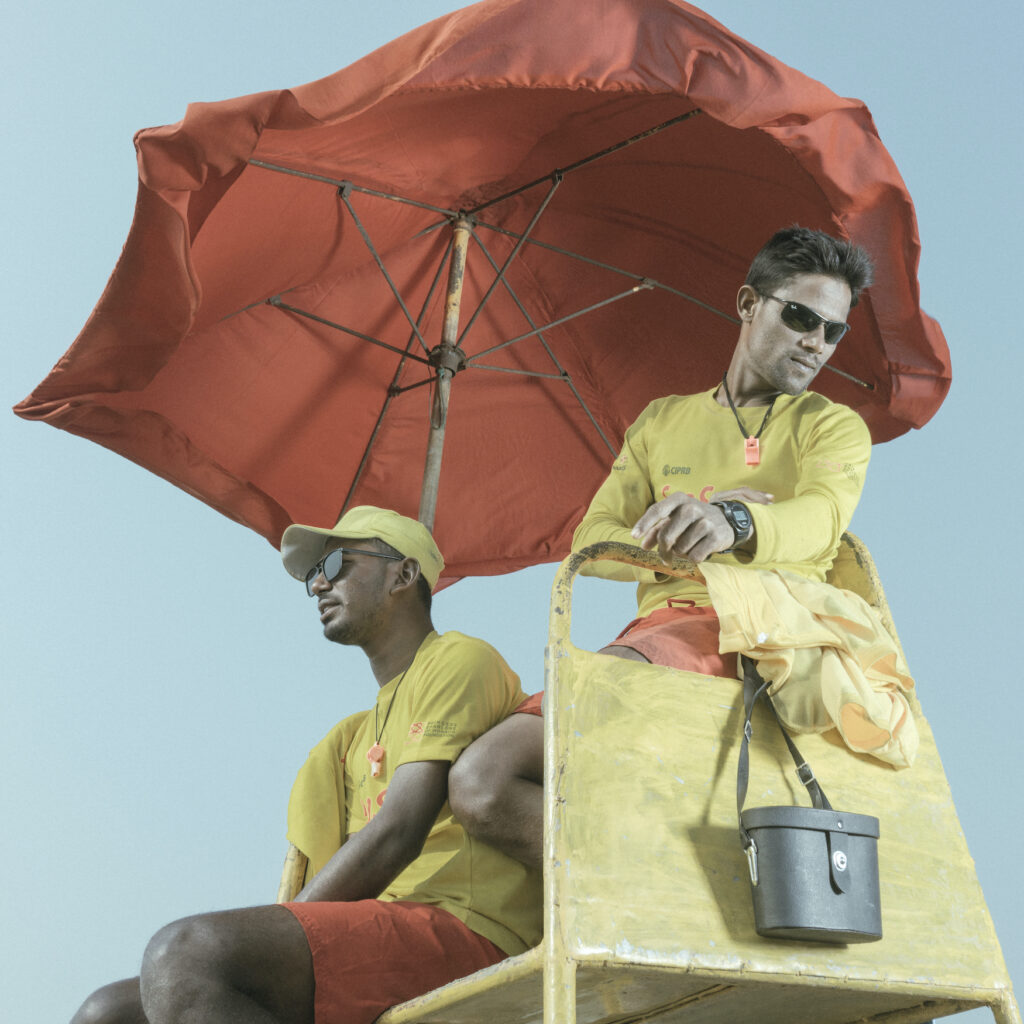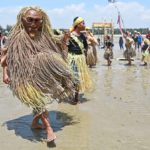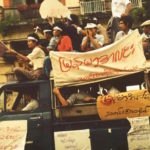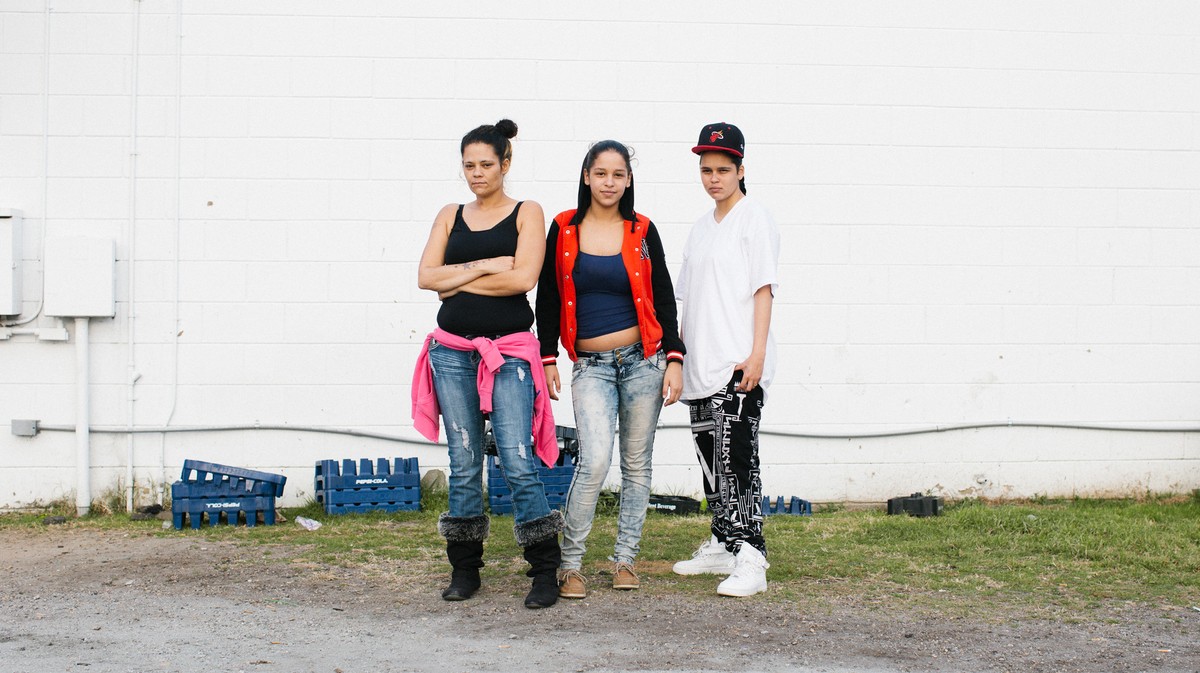To the Land of the Dead - Shiishonga
2018 - Photography (Photography)
36 x 36 inches
Mercedes Dorame
Mercedes Dorame utilizes photography to investigate, recode, and connect with her Gabrielino-Tongva tribe culture, as well as to bring current Indigenous experiences to light. The Tongva were the original inhabitants of what is now Los Angeles, and their domain stretched from Malibu to San Bernardino, including Aliso Creek. They have lived in the Los Angeles basin for over 8,000 years. The state of California recognized them as an Indigenous tribe in 1994. However, they are still not federally recognized, which means they have restricted access to government funds and no designated reservation territory as a tribe. Dorame’s Ceremonial Interventions Series is set in the Malibu hills, where she spent most of her youth with her non-Indigenous American grandparents. In images from this series, such as To the Land of the Dead – Shiishongahe, the artist uses organic elements such as sage, ochre, cinnamon, feathers, quartz, and the skins of coyotes and foxes—items that are traditionally utilized in ceremony and ritual—to activate this location, which was once Tongva territory. Her images also depict her work as a cultural resource consultant. Indigenous people are employed as cultural resource consultants to locate and occasionally remove artifacts, materials, and even mass burial sites in construction and development zones. Embracing the landscape as a collaborator, this series of photographs is inspired by Dorame’s ancestors’ connection to the land and their awareness of celestial motions and events such as the solstice, dawn, and deep knowledge of the earth-sky link. Dorame explains it is an understanding that brings us, our bodies, and our minds into harmony with the cosmos. She also believes that this ceremonial work with the land, may inspire a collective awareness, filling the gaps of history and our complicated past with new rituals that allow for the possibility of a sovereign future.
Mercedes Dorame is a photographer and member of the Tongva tribe in Los Angeles. In consideration of her heritage and deep connection to the landscape of California, Dorame’s practice critically engages with constructions of culture, ceremony, sovereignty, community survival, and land rights. Dorame creates what she describes as “humble ceremonial interventions”, installations that address the effects of living in a region where her tribe no longer has access. Her photographs capture these ceremonial interventions, noting that the federal government does not recognize her tribe, does not have reservation land, and therefore does not have a central gathering site. As we collectively grapple with the ramifications of expansive urban growth, both in terms of environmental degradation and the obfuscation of Indigenous history and vitality, Dorame’s work raises questions about the impact that urbanistic and architectural ambitions have on our understanding of Indigenous cultures in California and beyond.
Colors:
Related works sharing similar palette
» see more

© » 1854 PHOTOGRAPHY
‘A mosaic of traditions’: Capturing Bangladesh’s most beloved beach - 1854 Photography Subscribe latest Agenda Bookshelf Projects Industry Insights magazine Explore ANY ANSWERS FINE ART IN THE STUDIO PARENTHOOD ART & ACTIVISM FOR THE RECORD LANDSCAPE PICTURE THIS CREATIVE BRIEF GENDER & SEXUALITY MIXED MEDIA POWER & EMPOWERMENT DOCUMENTARY HOME & BELONGING ON LOCATION PORTRAITURE DECADE OF CHANGE HUMANITY & TECHNOLOGY OPINION THEN & NOW Explore Stories latest agenda bookshelf projects theme in focus industry insights magazine ANY ANSWERS FINE ART IN THE STUDIO PARENTHOOD ART & ACTIVISM FOR THE RECORD LANDSCAPE PICTURE THIS CREATIVE BRIEF GENDER & SEXUALITY MIXED MEDIA POWER & EMPOWERMENT DOCUMENTARY HOME & BELONGING ON LOCATION PORTRAITURE DECADE OF CHANGE HUMANITY & TECHNOLOGY OPINION THEN & NOW Two Bangladeshi life guard at the beach of Cox’s Bazar © Ismail Ferdous For his Leica Award-winning body of work, Sea Beach, Ismail Ferdous returned to the seaside of his childhood...
Related works found in the same semantic group
» see more

© » ARTS EQUATOR
Weekly Southeast Asia Radar: Puja Pantai in Selangor; young Cambodian singers talk old music | ArtsEquator Thinking and Talking about Arts and Culture in Southeast Asia ArtsEquator Radar AP January 16, 2020 ArtsEquator’s Southeast Asia Radar features articles and posts about arts and culture in Southeast Asia, drawn from local and regional websites and publications – aggregated content from outside sources, so we are exposed to a multitude of voices in the region...

© » KADIST
Zai Kuning
2014Justice (2014) presents viewers with a curious assemblage: a wooden gallows with slightly curved spindles protruding from the topmost plank, which in turn is covered with rudimentary netting, the threads slackly dangling like a loose spider’s web or an rib cage that’s been cracked open...

© » KADIST
Karla Kaplun
2019Studying the body in movement, this series of drawings depart from Karla Kaplun’s work A ztec BLAST® Workout (AWB) ...




